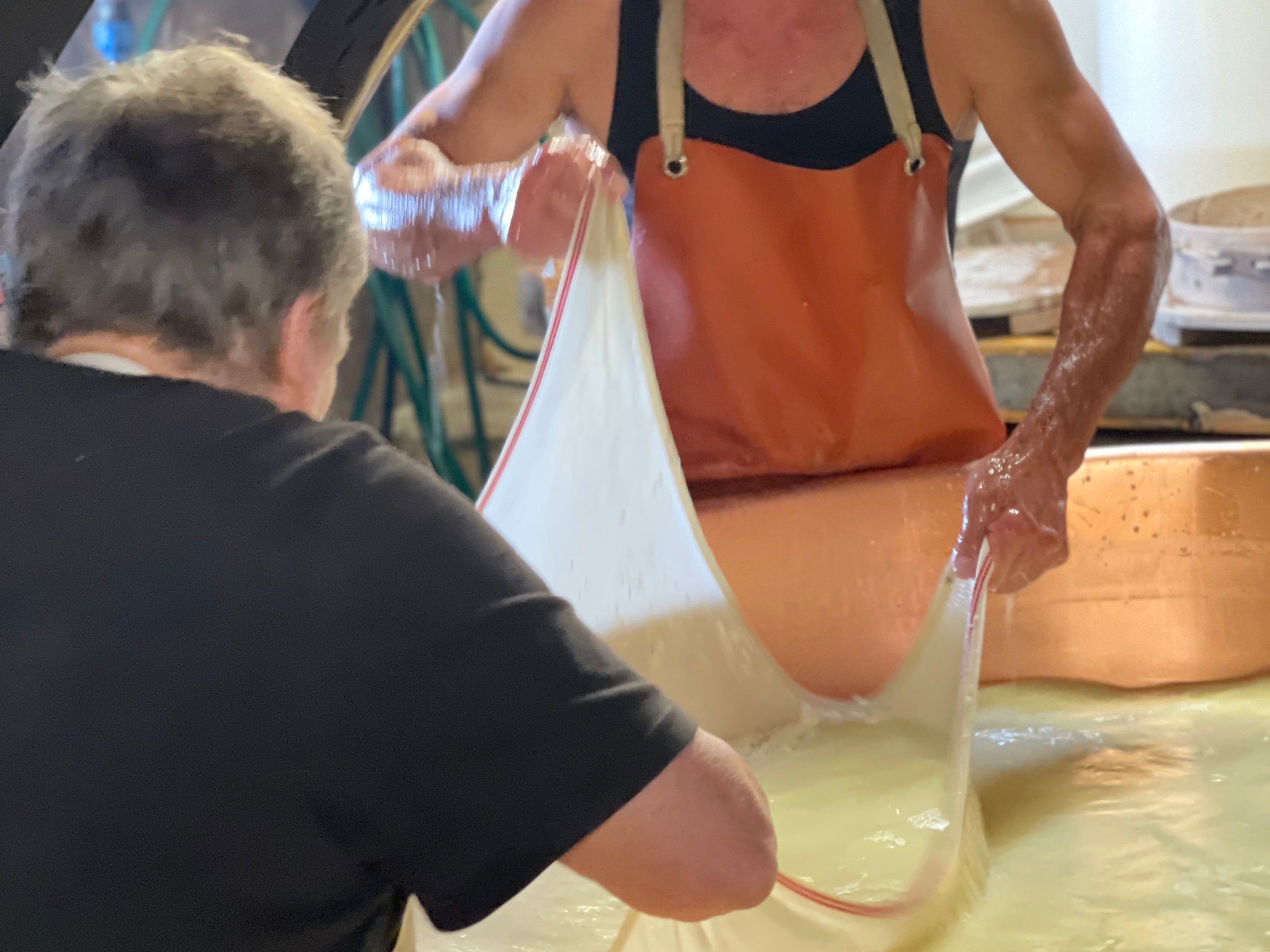
September 2022 - Alp Vounetz - 1,600m Alt

At the top of the rugged mountains of Charmey in Switzerland, dairy farmer Béat Piller submerges his chest and arms into a large cauldron of warm cut curds and whey.
Following a recipe and techniques first written down over nine hundred years ago, and taught by his own father, he will turn more than 40 kilos of fresh curds into a wheel of Gruyère d'Alpage AOP by hand twice that day - all he is allowed by Swiss law. It's a back-breaking task that will take him the better part of eight hours.

Gruyère is probably Switzerland’s most popular cheese to enjoy that protection, but it’s far from alone. Cheeses such as Vacherin Fribourgeois, L’Etivaz, and Tête de Moine also benefit from the AOP (Appellation d'Origine Protégée) system.

These classifications and their related governmental policies are designed to protect the names and processes of unique and historically significant products, preserving their geographical origins, methods of production, and characteristics that define them. By recognizing each product as intellectual property, these systems help protect small producers and sometimes ancient and fragile production methods from counterfeiting and misrepresentations throughout the world.

Made only in higher altitudes from early June to early October, the Gruyére d’Alpage AOP is produced in the canton of Fribourg, in western Switzerland. It is a unique cheese and a direct continuation of the region’s cheesemaking traditions from centuries ago. It is required to use only feed found in the alpine pastures, handmade cheese-making techniques, and centuries-old materials to provide heat and storage.

Would the average consumer make the distinction between those special wheels made in the alps during the warmer months and the valley wheels produced all year-round? Possibly not. While there are distinct differences in flavour and texture, they are both essentially cooked-curd alpine cheeses made from cow's milk. It requires anyone who are casually biting into a delicious slice to know about its origin. As I keep telling anyone who will listen to me, the more you know, the better it tastes!

Keeping Gruyére d’Alpage AOP’s methods exactly as they were when created so long ago is an important way to stay connected with the past. Without clearly defining what makes the cheese so unique and special, there is a real danger of diluting the cultural value it has held for centuries.
I believe we owe our children and future generations the integrity of our culinary heritage. We need to keep ancient traditions alive.
We are, alongside Béat and his mother, the custodians of these ancient traditions!


Comments (0)
Back to What's Happening in our World of Cheese